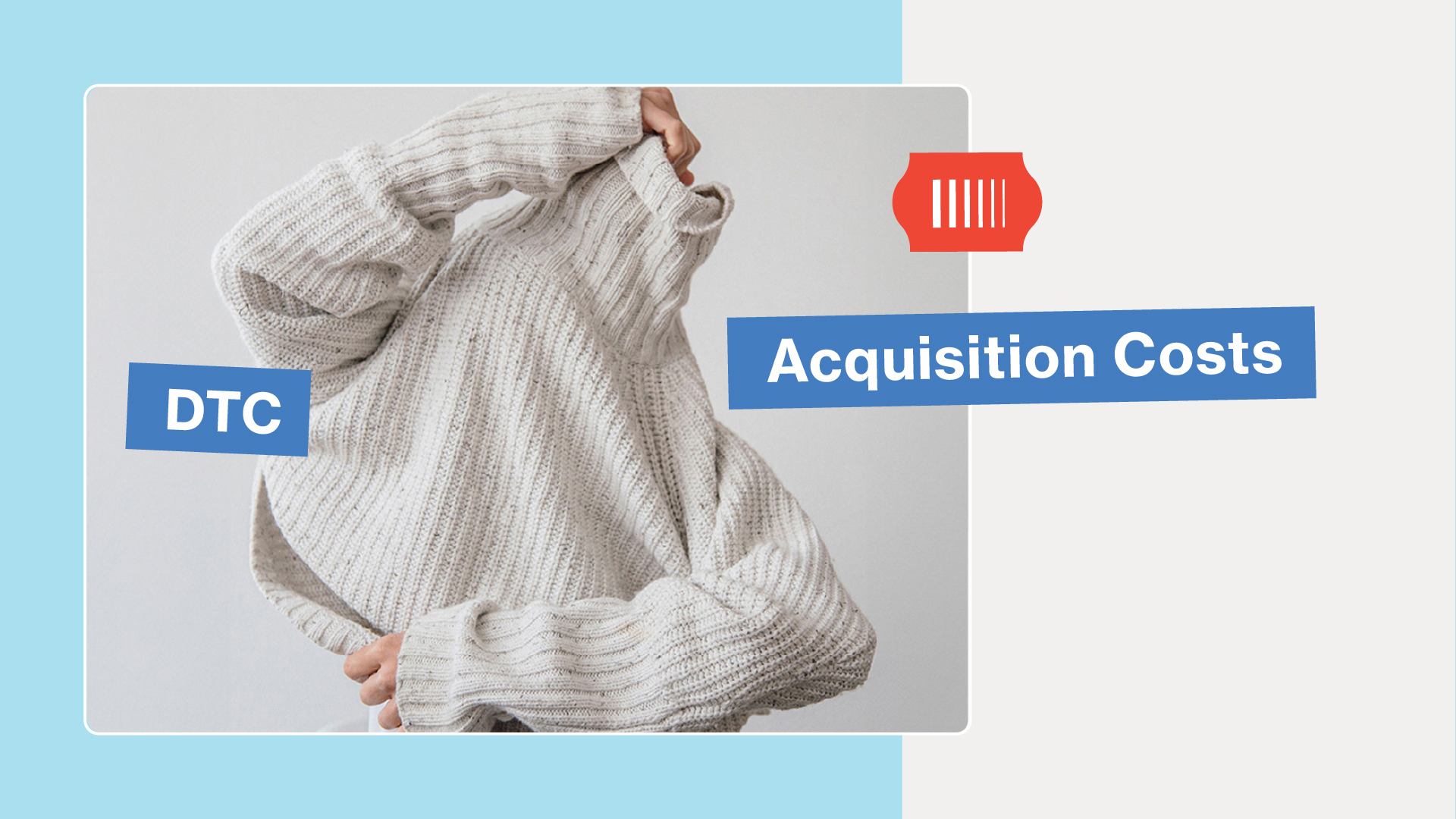Trend, Tradeshow Recaps, Industry Insights and more!

Brandon Warren, Chief Growth Officer
I recently attended the Sonoma Brands Capital Consumer Summit where the group president of General Mills’ pet segment confirmed something I’ve long suspected: Large food manufacturers no longer have an appetite for brands simply burning cash and bringing revenue to the table. They want brands that are profitable now and have an upside profit potential when scaled.
You may long for the early days of DTC – when Warby Parker and Dollar Shave Club went straight to consumers and built entire brands online. But what was successful then isn’t working as well today.
Customer Acquisition Costs (CAC) put serious pressure on profitability. And it’s getting harder to make only digital-first strategies sustainable. Brands playing the DTC game without a broader approach are setting themselves up for a tough ride.
Why are Customer Acquisition Costs rising, why does it matter and, with this focus on profitability, how can DTC brands truly compete?
For most DTC brands, digital marketing is their bread and butter. It’s been the go-to way to scale. But costs to reach customers online are going up across the board. Here’s why:
More brands are fighting for the same digital real estate. Whether it’s Google, Facebook, Instagram or TikTok — ad space is crowded. And with all that demand, prices are skyrocketing.
Consumers are overwhelmed by ads. It’s taking an increasing number of touchpoints to convert them into buyers. That means brands are shelling out more dollars for each sale.
Recent privacy moves like Apple’s iOS 14 update and the growing restrictions around third-party cookies have made targeted advertising harder. If you’re not reaching the right audience, your ad dollars are basically burning up.
Brands that start off strong with paid ads usually hit a wall. After you’ve cleared the lowest bar —those early adopters—CAC just keeps climbing.
The basic equation is this: If it costs more to acquire a customer than what you’re making from them, you’re in trouble.
For example, if your CAC is around $25 and your average order value (AOV) is $50, the margin between you and a profit is pretty tight. Add in costs like shipping, production and operations, and suddenly, your business model starts to look shaky. This is why so many DTC brands are struggling to scale—they’re chasing growth, but burning cash to do it.
Here’s the real solution: STOP thinking in terms of DTC versus brick-and-mortar. The winning approach isn’t about choosing between these models; it’s about blending them. An omnichannel strategy integrates both online and offline channels, giving customers the flexibility to shop on their own terms and providing brands more ways to reach, engage and retain them.
Major retailers have built-in foot traffic and massive brand awareness, which means you can reach more customers without the constant ad spend of a digital-only strategy. By placing your products in stores like Walmart, Target or Costco, you’re essentially tapping into their reach and saving on the high cost of acquiring customers online. The CAC through these channels is often much lower compared to digital advertising.
Getting your products into major retail chains makes it easier for customers to engage with your brand. If your product is on the shelf at their local store, they’re more likely to grab it during a routine shopping trip and continue purchasing. It’s about being available where your customers already shop, building long-term relationships with them.
Consumers are still driven by the convenience and trust of big-name retailers. By having your products available in stores they visit regularly, like Target or Walmart, you’re making it easier for them to discover your brand in a low-risk, high-trust environment. Once they experience your product in-store, many will likely go online for repeat purchases or engage with your digital channels, building a cycle of discovery.
Retail partnerships also create a seamless shopping experience. Customers can buy your product online through your website or your retailer’s site, pick it up in-store, or grab it directly off the shelf. This flexibility drives more conversions and loyalty because you’re making it as easy as possible for customers to access your brand. You want to meet consumers where they already are, not where you want them to be.
When you get your products into stores like Costco or Target, you’re not dealing with the same logistical headaches (and costs) of direct e-commerce, like shipping or returns. By leveraging these retailers’ massive distribution networks, you can focus on driving more volume with fewer operational burdens, often resulting in higher margins compared to selling directly to consumers online.
Creating a successful omnichannel strategy doesn’t have to be a heavy lift for your organization. The smarter approach is to combine a strong DTC presence with strategic partnerships at major retailers like Walmart, Target, and Costco. This allows you to expand your reach without the major costs associated with a digital only strategy.
Here’s how to get started:
Focus on getting your products on the shelves of the right retailers for your brand. Invest in research specifically targeted to your core customers and ask them where they expect to find your brand on shelf. These partnerships provide instant access to a massive customer base. With the right approach, you can use the visibility and trust of these stores to drive both in-store and online sales.
While selling through major retailers is crucial, don’t abandon your direct-to-consumer channel. Your DTC site remains important for customer data, brand storytelling and nurturing a loyal community. It’s where you can fully control the customer experience and keep margins healthy. An omnichannel strategy should make it easy for customers to discover your product at a retailer and seamlessly purchase directly from you next time, or vice versa.
Almost all retailers now have robust online platforms. Make sure your products are not only in their physical stores but also optimized on their websites. This will allow customers to buy online and pick up in-store or have products delivered to their doorstep. This approach enhances customer convenience and drives more sales through multiple touchpoints. Again, meet your consumer where they already are shopping.
If you’re unsure how to navigate these retailer partnerships or how to position your brand for success in these channels, consulting with experts is a smart move. Partnering with an experienced agency like The Barcode Group can help you create a tailored retail strategy, ensuring your brand gets the right exposure, placement and support to succeed in the competitive retail landscape.
Bottom line? CAC is rising every minute. Brands need to think bigger to ensure success.
Rising customer acquisition costs are making it tough for DTC brands to thrive with just digital strategies. But don’t fall into the trap of thinking it’s an “either/or” game between DTC and physical retail. The real opportunity is in creating a seamless omnichannel experience that combines the best of both worlds—online convenience and in-person engagement. In my opinion, DTC is where you build brand awareness, but retail is where you scale.
Brands that get this right will not only lower their CAC but also deepen customer loyalty, increase profitability and set themselves up for long-term success.

We’re constantly gaining industry knowledge: from tips and tricks to back end data, we got crazy amounts of knowledge ready to share with you.
Get access